David C. Schultz first became interested in photography while taking extended road trips around the United States and Canada soon after high school. Here meet a pro photographer one day one a beach in Washington State that convinced David he should try selling his work. The hook was set.
A native of Michigan, David moved to Dallas at age twenty-two and began his photography career as a fashion photographer, which he pursued for seven years. Following a visit to Utah on assignment in 1987, he returned to Dallas, closed his studio, and moved to the alpine town of Heber, Utah, where he currently resides.
Since moving to Utah, David has concentrated on photographing landscape and wildlife images. His work has been used by National Geographic Publishing and has appeared in many magazines and advertisements including Nikon, Outdoor Photographer, Travel & Leisure, Snow Country, Islands, and National Geographic Traveler.
David owned a nature photography gallery in Park City, Utah, West Light Images, and after 12 years of operating that gallery he decided to close so he could spend more time traveling the world, teaching photography workshops, and giving private photo lessons. In recent years he’s concentrated on the Polar Regions but he also offers private and semi-private customized photography tours as well as the scheduled workshops which may be viewed here.
To see more from David, follow him on 500px, visit his website, or check him out on Facebook and Instagram.
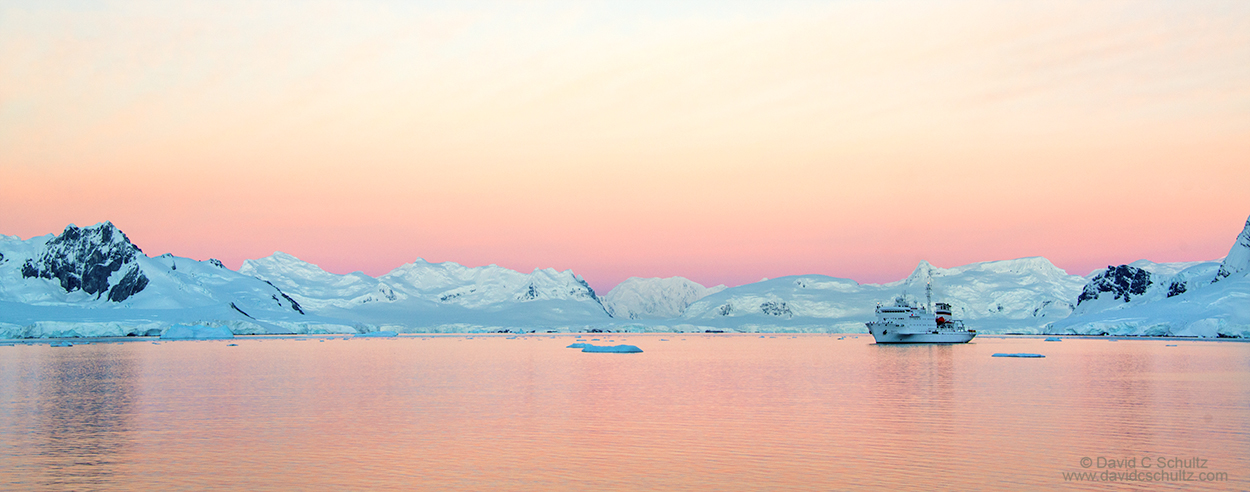
For several years now I’ve traveled back to Antarctica, usually 2-3 voyages per season. This started after seeing the images of this southern continent captured by Frank Hurley during the ill-fated Trans-Antarctic Expedition of 1914 most commonly known as the Endurance Expedition lead by Sir Ernest Shackleton.
Seeing those incredible black and white photographs and learning about the conditions in which they were captured set me on a goal take my first voyage.
A Day in the Life of an Antarctic Photographer
4 A.M. Seems the sun just set, and actual this time of year at this latitude it indeed had, when my alarm goes off for the start of another long day aboard the Akademik Sergey Vavilov. This is my floating home away from home for the past six weeks. It’s my fourteenth voyage to Antarctica and as usual at this point, and this time of morning, I tell myself this will be my last.
It’s also usually several months later in July when sitting in my office editing photos from the last trip that I begin making calls and booking clients for a return voyage.
As I exit my cabin I’m greeted by the pastry chef coming up from the galley with a tub full of freshly baked peanut butter cookies! A great way to begin the morning as it’ll be another 3 hours before breakfast is served.
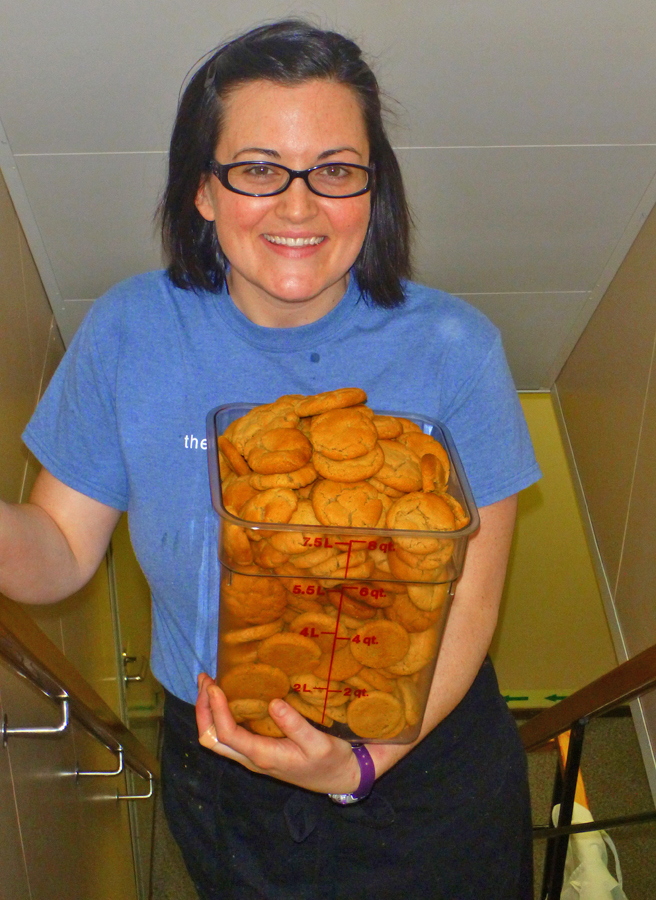
Overnight the ship stayed positioned just north of the entrance to the Lemaire Channel which is arguably one of the most dramatic passages along the Antarctic Peninsula.
Up on the bridge I check one of the monitors and it looks like we’ll have clear sailing this trip as this passage will often be blocked by sea-ice or icebergs. We’ll enter the channel shortly after wake-up call so everyone can enjoy the view.

6 A.M. The sun is coming up behind the most impressive of the jagged peaks that jut straight up out of the sea. A bit of side/backlighting along with some beautiful clouds make for a perfect setting. There’s plenty to shoot before we sail into the channel.
Just as we set off the sun clips the mountainous horizon line setting off a burst of light. No time for any HDR shooting but I was happy with what I captured.
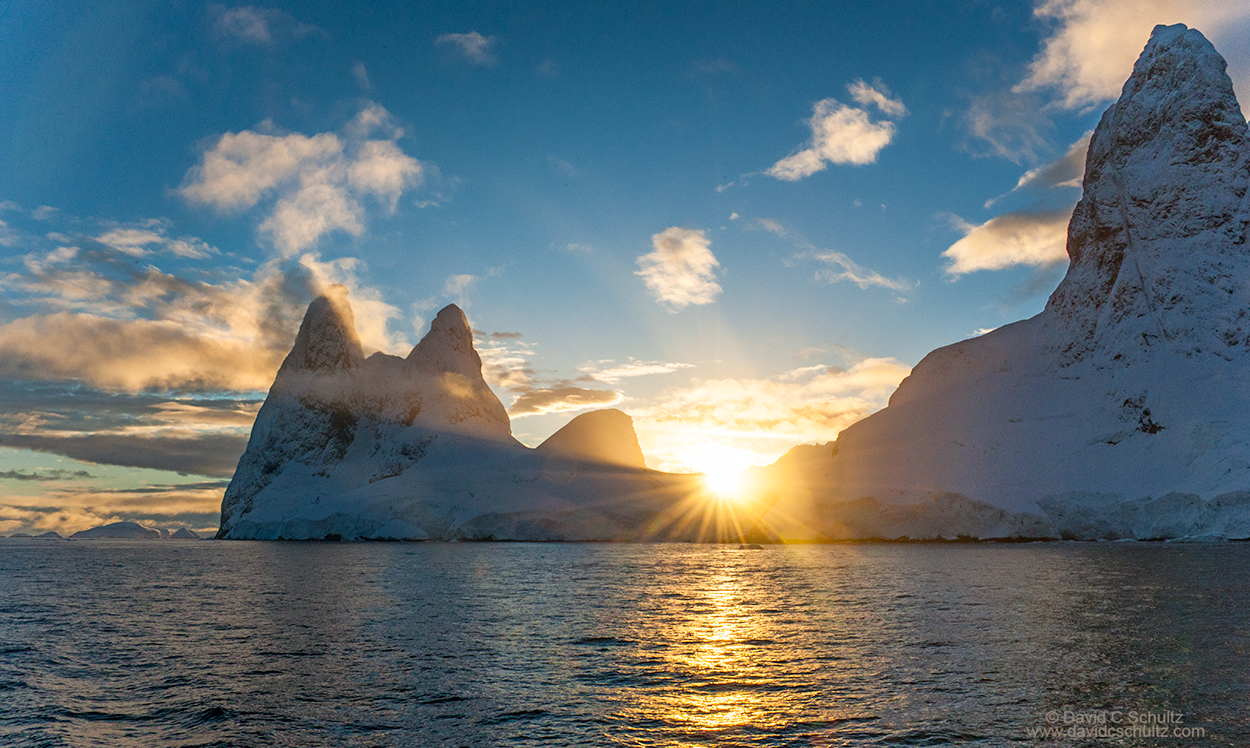
7 A.M. Staff briefing which even though I’m onboard as the expedition photographer with my clients I have to attend. We’ll be heading to Peterman Island for our first landing of the day.
7:30 A.M. Time for breakfast which is consumed quickly. I also wrap up a few pancakes slathered with peanut butter and jam, grab extra fruit, yogurt … and more cookies, all to be stowed away in the cabin for my dinner. Will explain at dinner time!
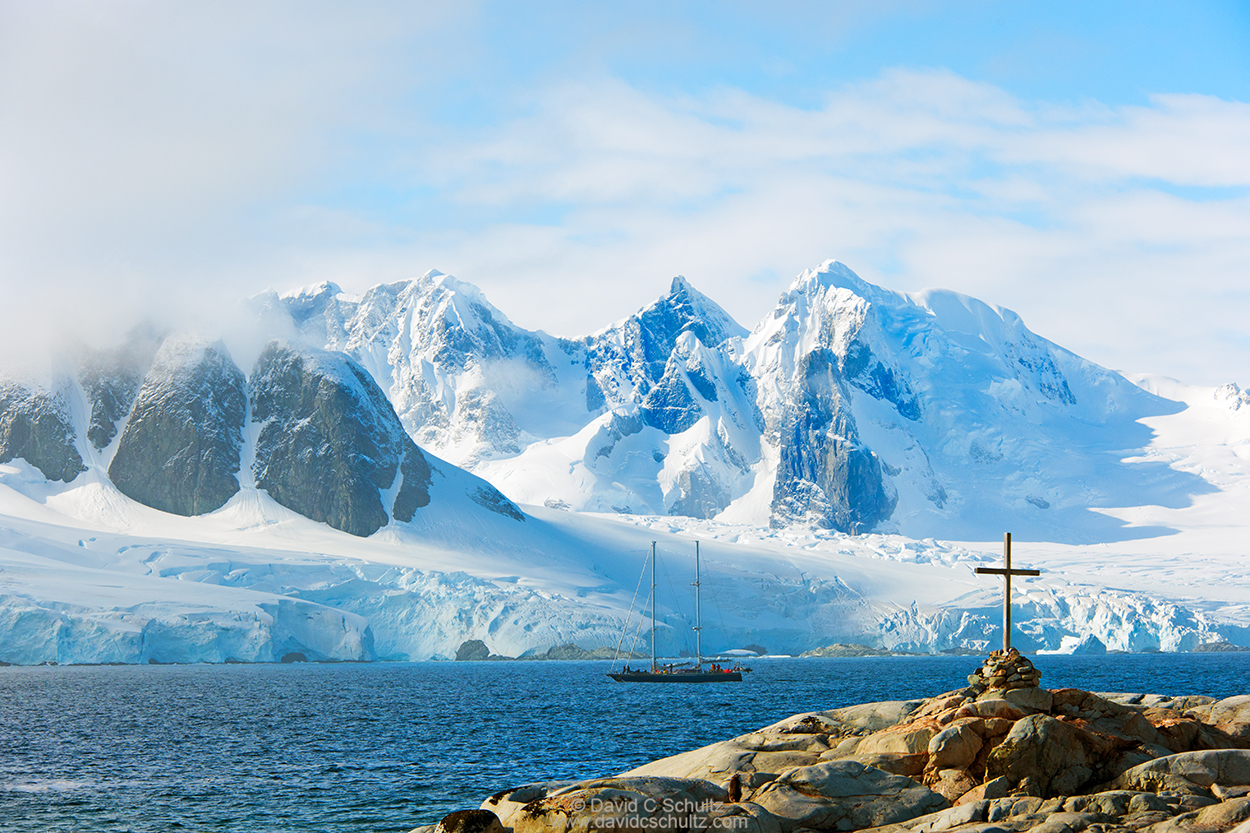
9 A.M. We’ve exited the Lemaire Channel and are anchored off Peterman Island. A short Zodiac ride gets us ashore and a few hours are spent exploring the area, photographing both the landscape, especially that of Mount Scott at 880m directly across the Penola Strait, as well as the abundant penguin population. Peterman Island also has a memorial for three researchers that perished there in 1982 and that is photographed helping to add a human touch to this remote part of the world.
The island is designated an “Important Bird Area” due to the Gentoo and Adelie penguins that nest here. Over the years that I’ve been coming here the penguin population has changed from being predominately that of Adelie to now being taken over by Gentoo, most likely because of climate change and lack of sea-ice.
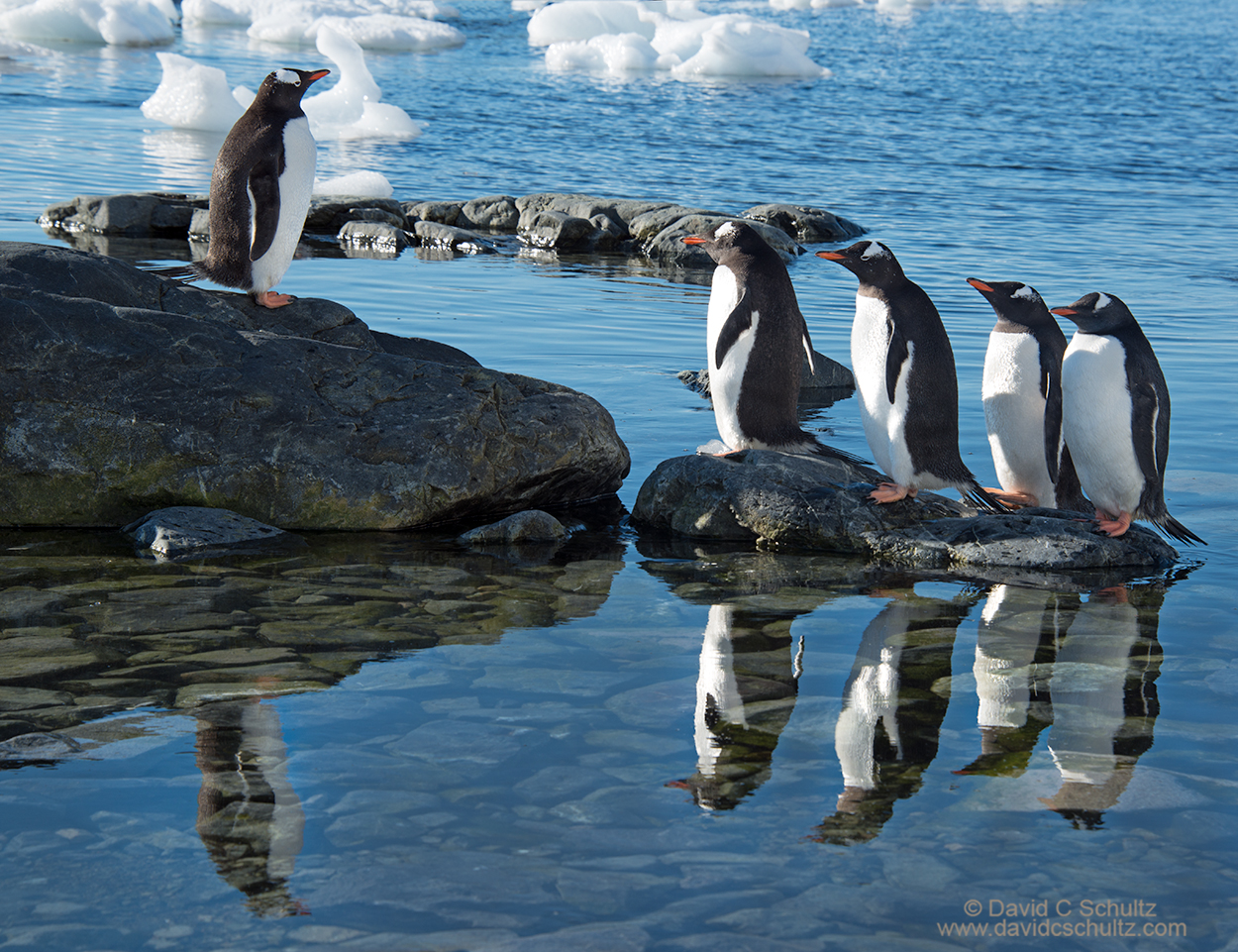
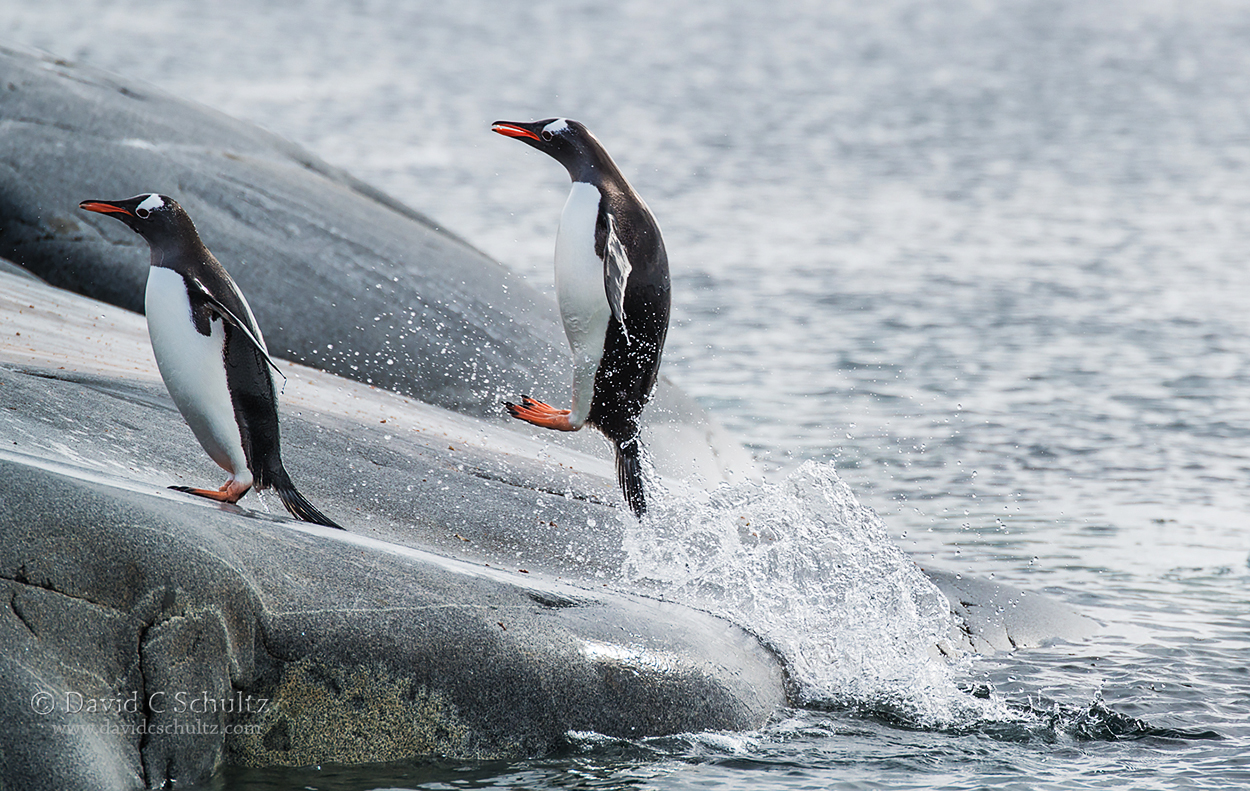
The best location I feel for photographing the penguins in much of Antarctica is down near the water. I look for a spot that is popular for them to jump out of the swells and onto the rocks. Here’s an opportunity to capture some action, but predicting when they’ll pop out is also a way to test your patience and your camera’s auto focus abilities.
Another nice thing about shooting here is that the penguins are all nice and clean, which is a REAL problem when up around their nesting areas. It smells much better here too! I snap a few close-up shots of them as well, the water droplets beading up on their feathers adds a nice touch.
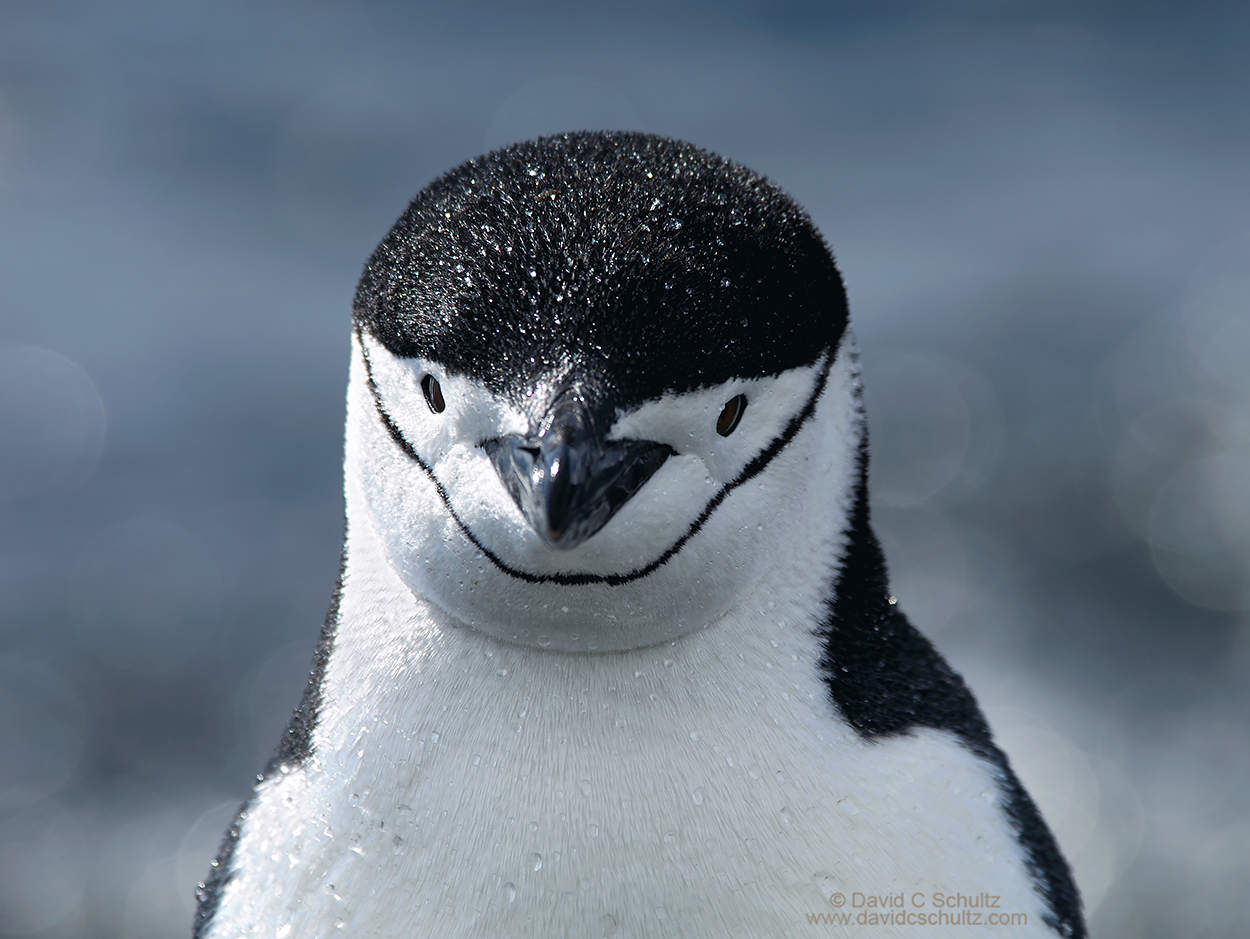
12 P.M. Back on the ship, batteries in the charger and memory cards dumped onto the laptop and external drives before heading in for lunch. Pizza! … and another cookie.
2 P.M. We’ve sailed to our farthest South destination and are now anchored off-shore at Verandsky, a research facility once named Faraday Station long ago established by the British. It was then purchased by the Ukrainians in 1996 for a token one pound. It’s also the home to the southernmost bar in the world. Worth noting and worth having a shot of vodka which they distill at the base!
While a group gets a tour of the station, and many certainly sample the vodka, I head out on a Zodiac with a client to explore the surrounding coastline. We visit the historic Wordie House on nearby Galindez Island where time is spent photographing the interior of the hut which is very well preserved and contains many interesting elements still in place.
Not sure I’d trust a cup of their coffee at this point but the old rusty containers make for great detail and storytelling images.

4:30 P.M. Next stop is a location the name of which pretty much sums it up: “Iceberg Alley,” a big favorite location of mine. Bergs, many of which have calved off the massive ice-shelves farther south, drift north in the Bellingshausen Sea and get stranded in this area during the constant storms.
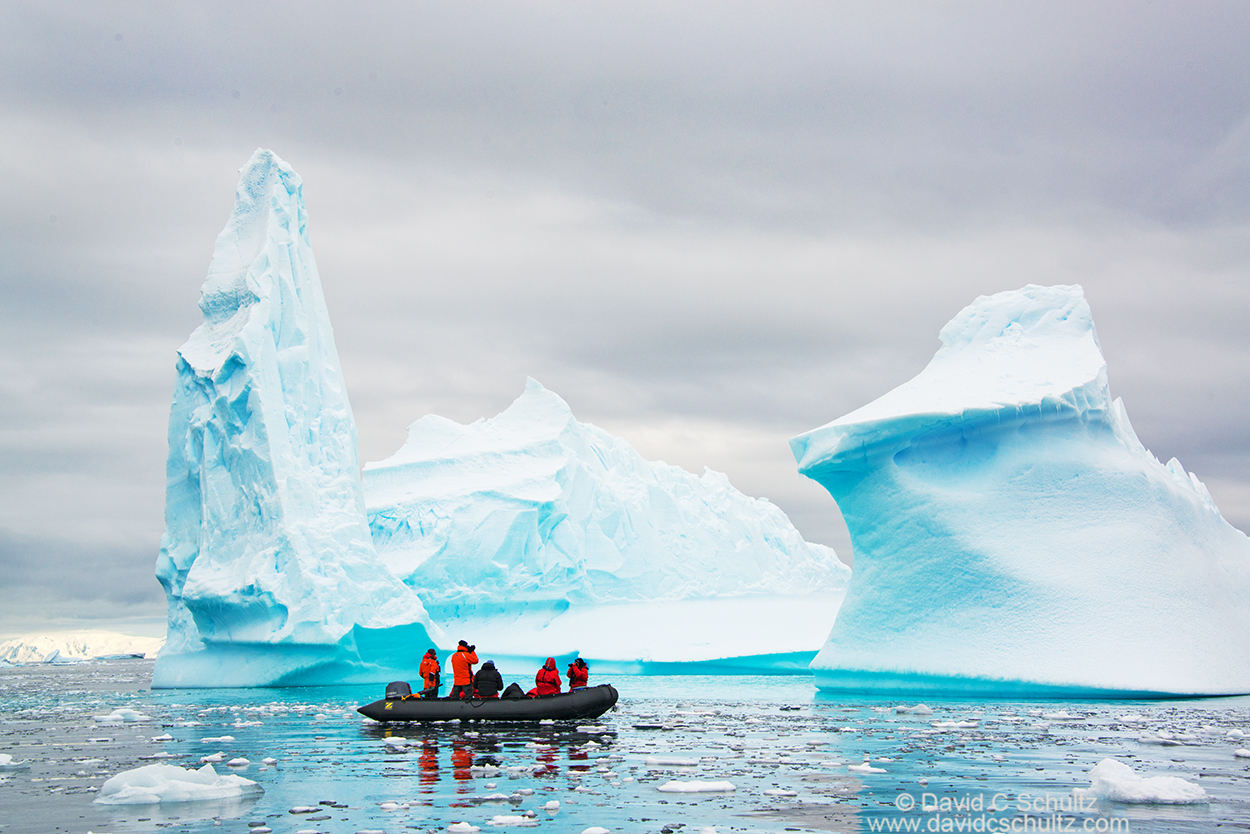
5 P.M. We’re off for a Zodiac cruise that is going to be a very, bumpy, wet, and cold experience, but well worth it. The weather has changed dramatically since our last landing which is typical anywhere in Antarctica. It was questionable whether we’d set off but the captain repositioned the ship to “better protect” the gangway from the large sea swells and so we launch.
The very ominous looking sky made for a spectacular backdrop contrasting the vibrant blue of the gigantic sculpted chunks of ice which surround and tower over us. High ISO, very fast shutter speeds, and plenty of lens cleaning were part of the photo opportunity. I could spend days shooting in this location but we only have a couple hours.
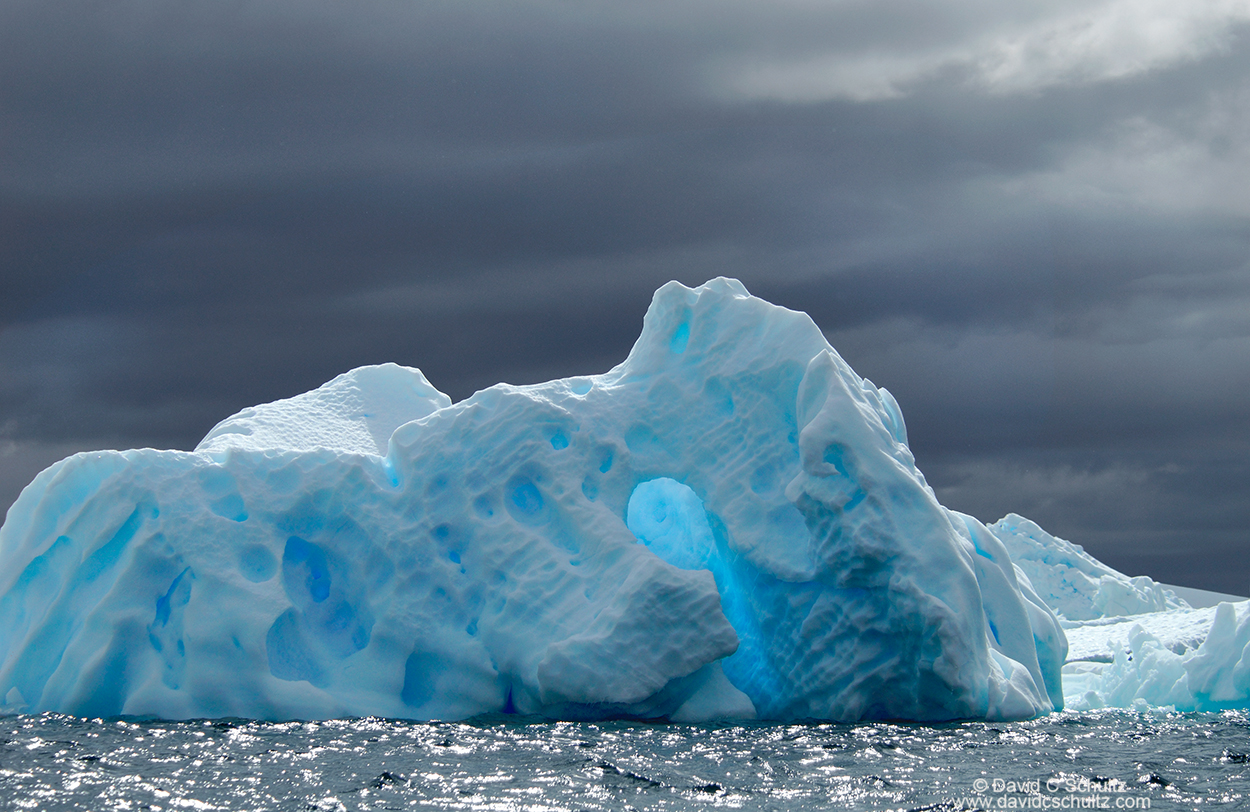
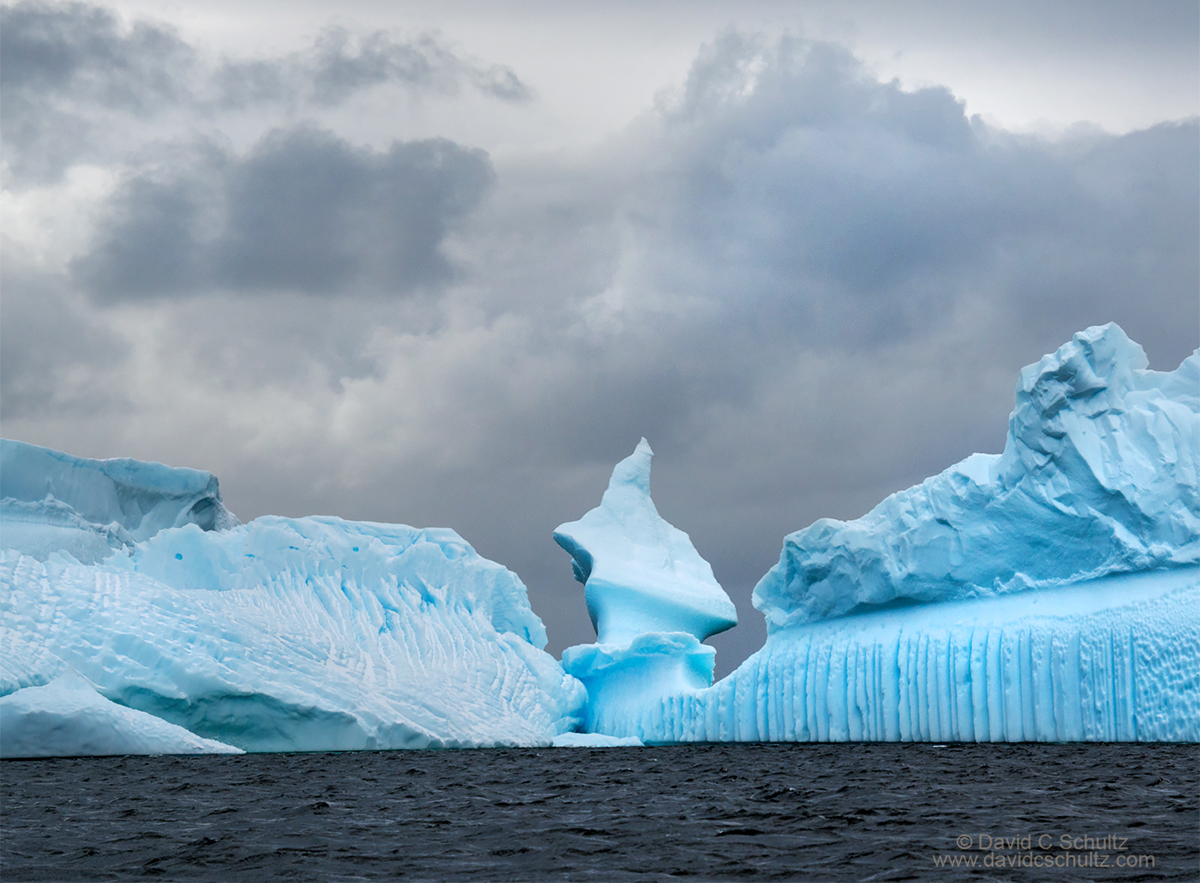
7:30 P.M. Back on board the ship, somewhat warmer and only a little drier. We now continue back north again entering the Lemaire Channel from the opposite direction. Dinner is served at 8pm but there’s too much to see and possible photo opportunities passing by for me to be sitting in a dining room.
So instead I break out my stash of morning pancakes, fruit, etc … and another cookie, scarf it down, fill the mug with coffee and head back out on deck.
8 P.M. Amazing that by the time we reach the entrance to the channel the storm we encountered a few miles back has cleared and has given way to a blue sky and puffy white clouds, depending on which direction you’re looking.
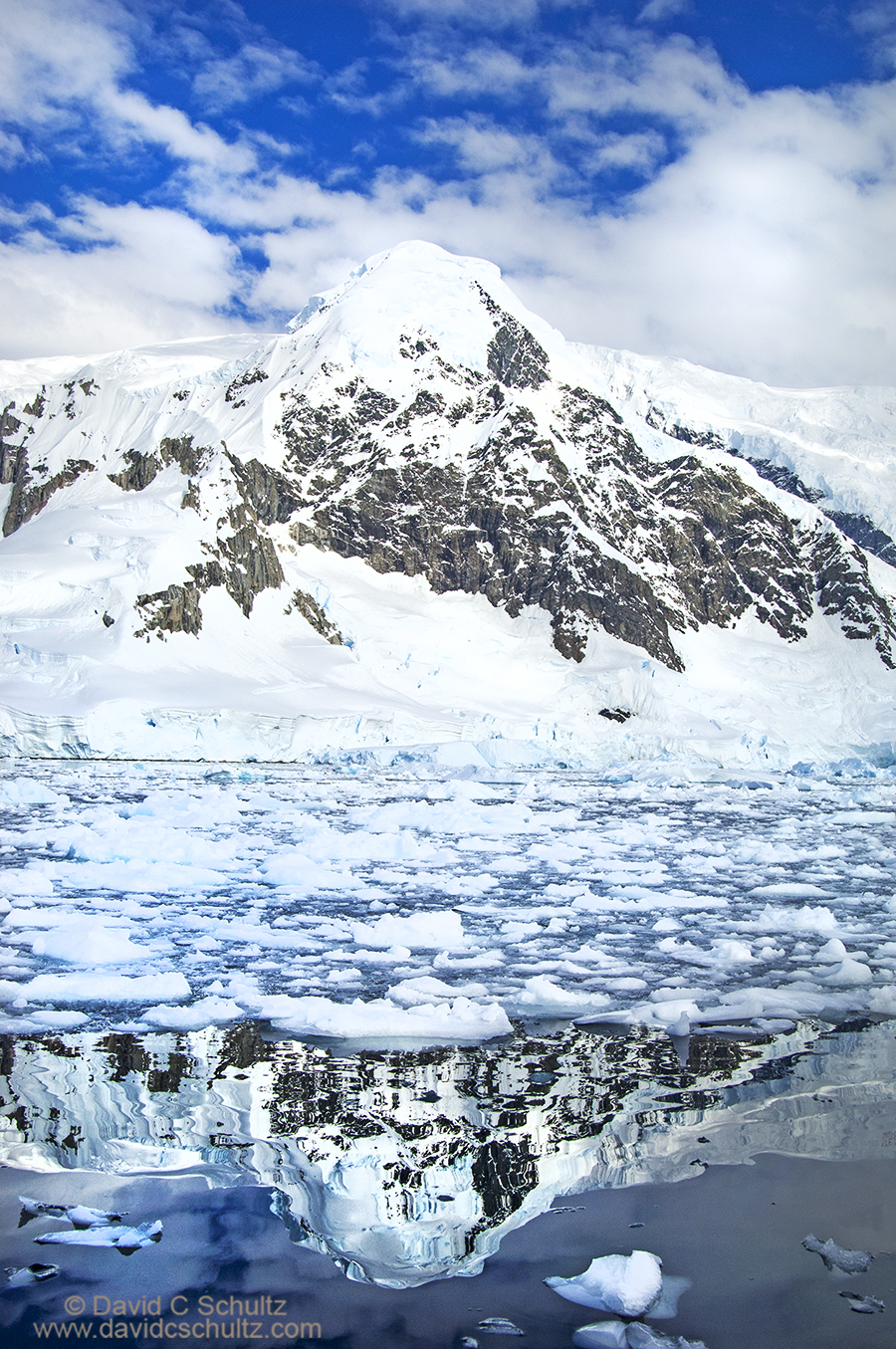
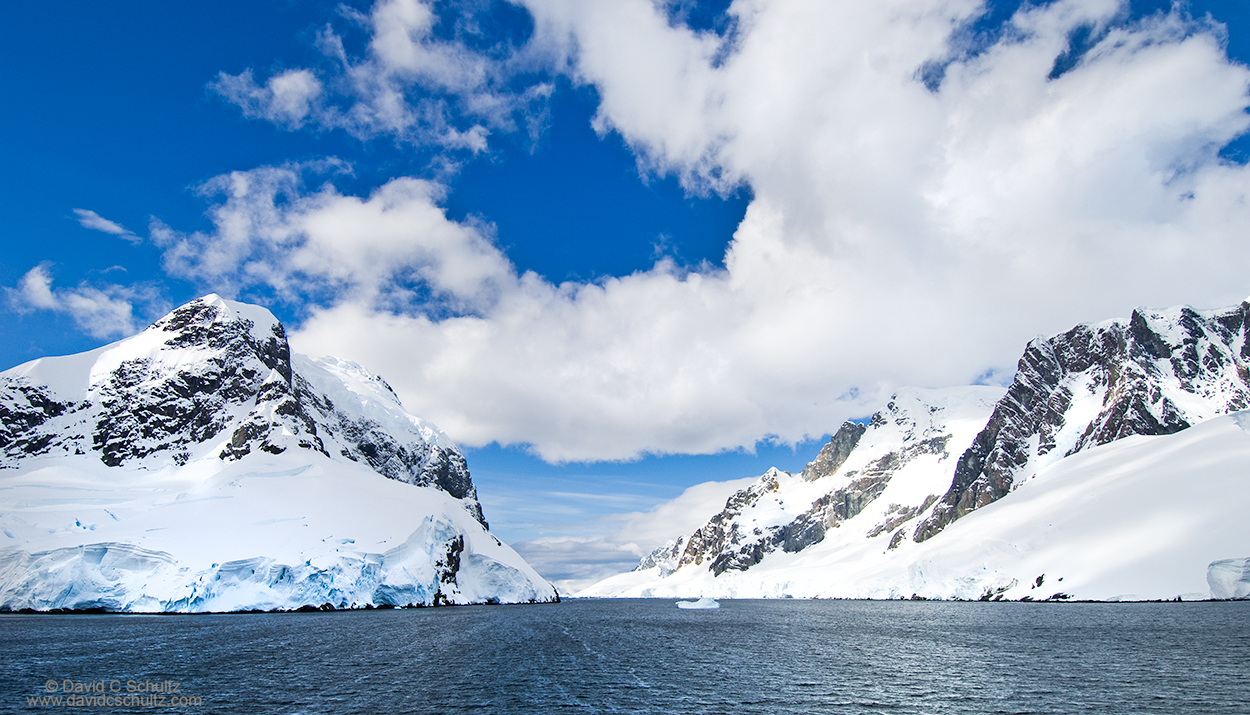
As we sail north crossing Flanders Bay we pass a number of small islands and icebergs, which in the late-day light are wonderful to photograph. We’re always watching out for Humpback or other species of whales but nothing spotted this evening.
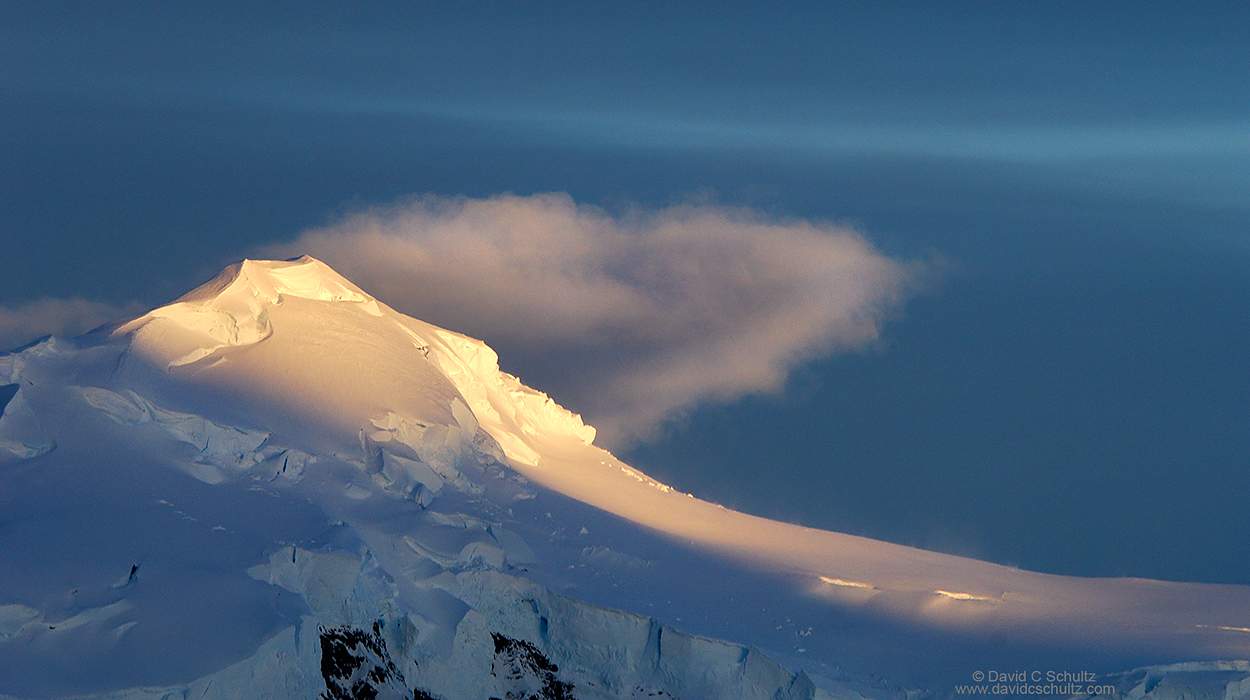
10 P.M. The sun is hugging the horizon as another storm approaches from the west. We’ve reached our destination for the evening, a place appropriately named Paradise Harbor. The scenery as well as the light does not disappoint!
I take a short break heading to the bar to grab a mug of coffee, this time with a bit of brandy and Kahlua, to enjoy while back on deck photographing the surrounding mountains for the next few hours.
There are so many photo opportunities right from the bow of the Vavilov. More than once I decide to call it a day only to find myself an hour later firing off a few more frames.
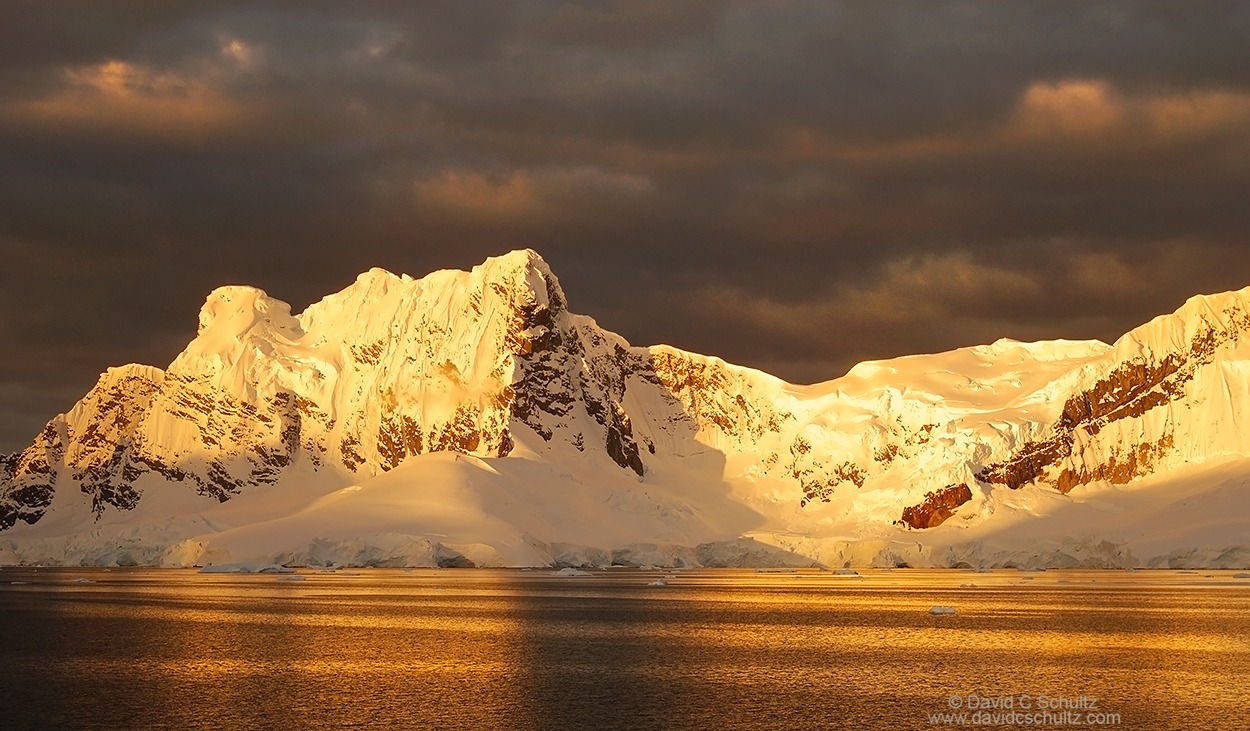
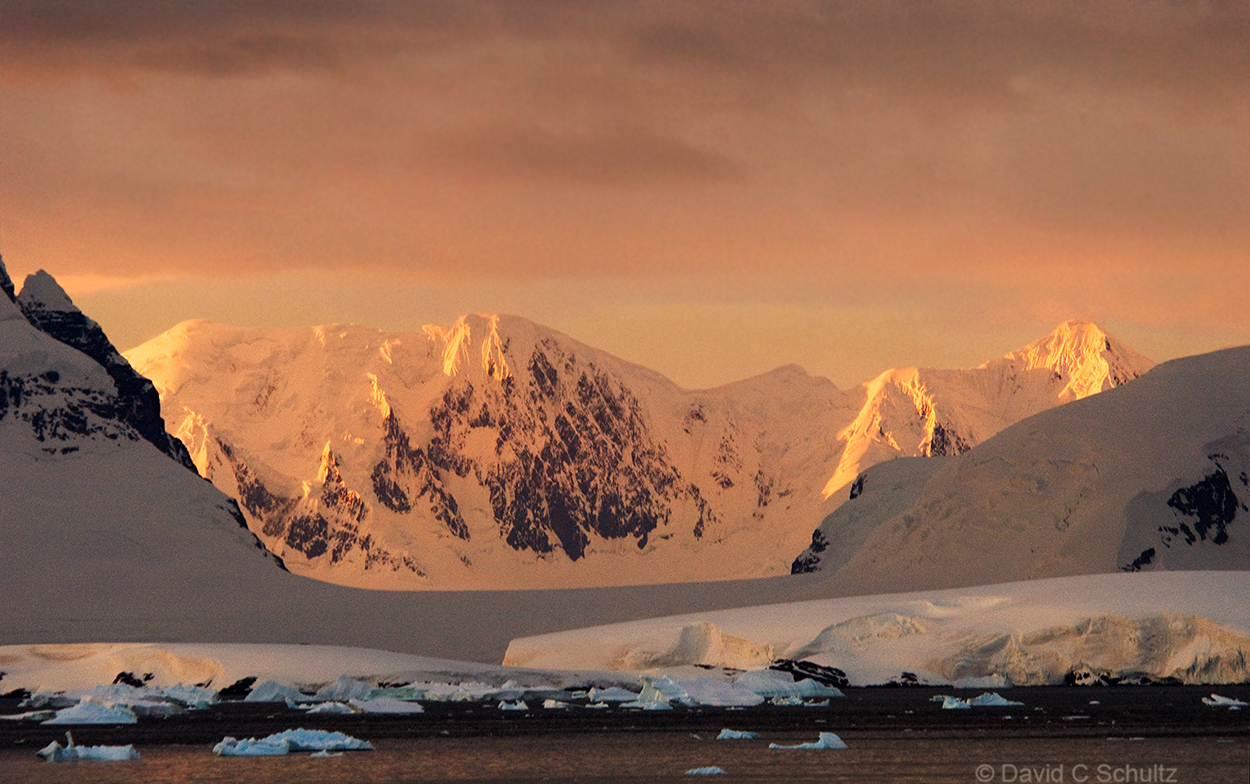
1 A.M. Time to head to the bunk as I know I’ll be back at it in a few hours. At the end of this seven week journey I know sleeping on the long flight back to Utah will not be a problem.
Editing all of the images is another story.



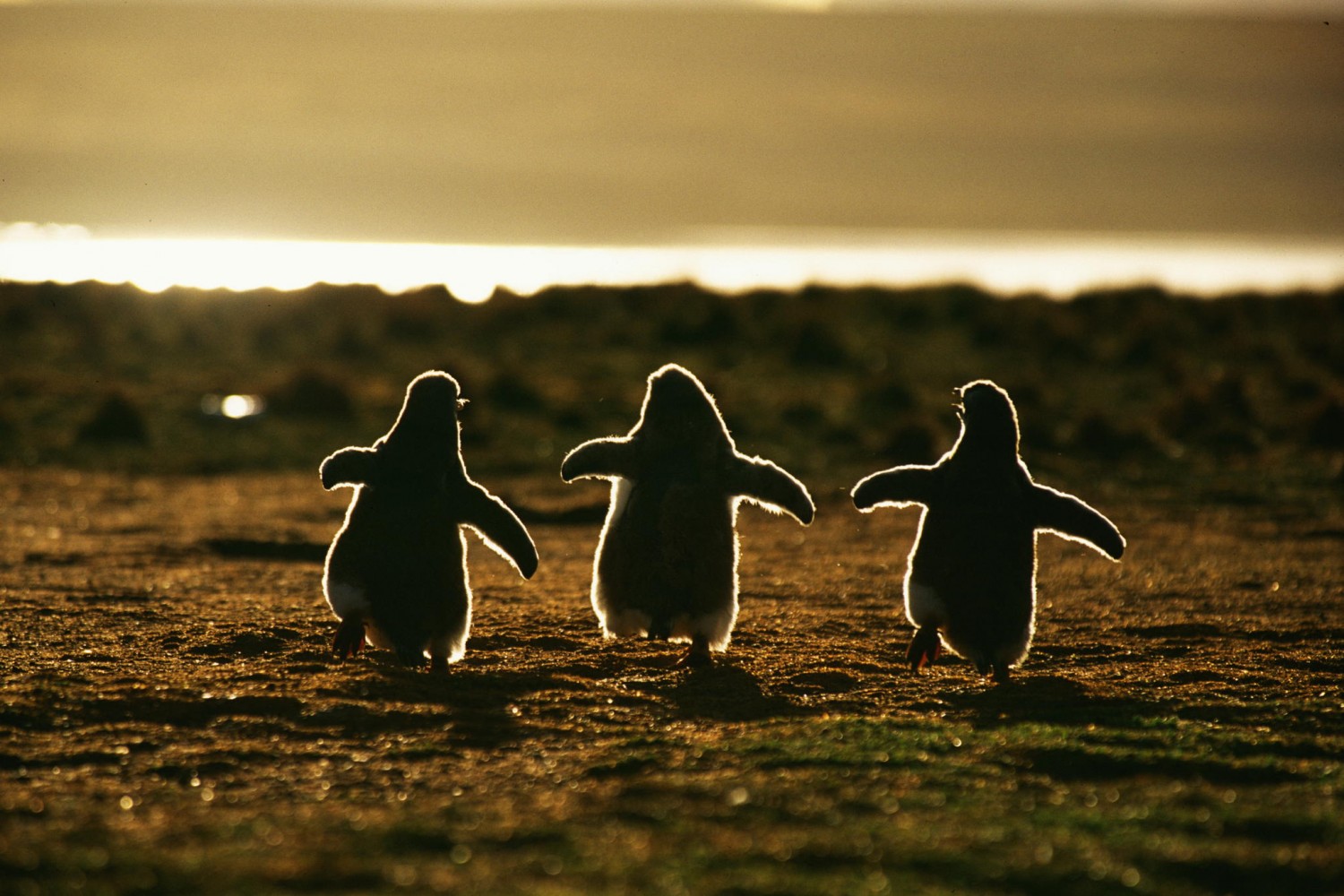
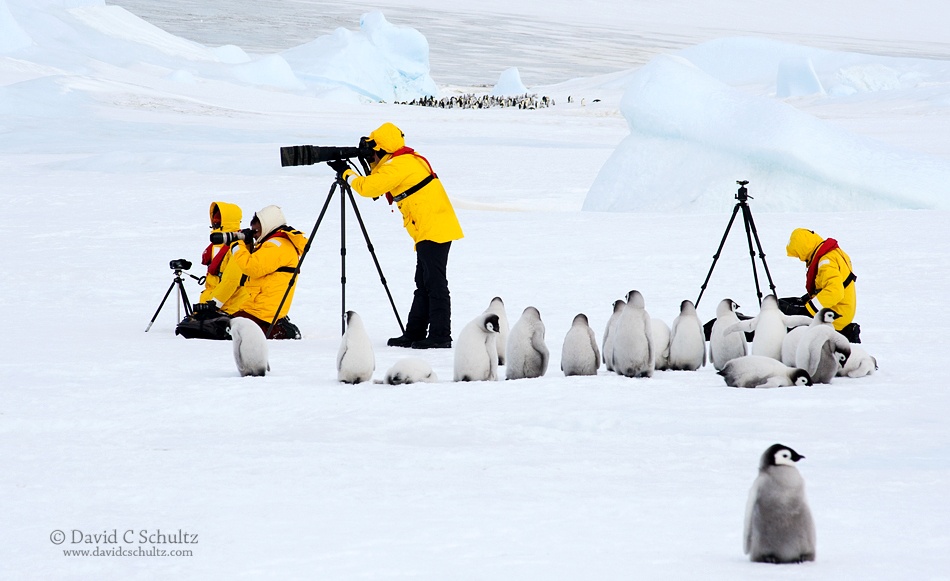

Leave a reply